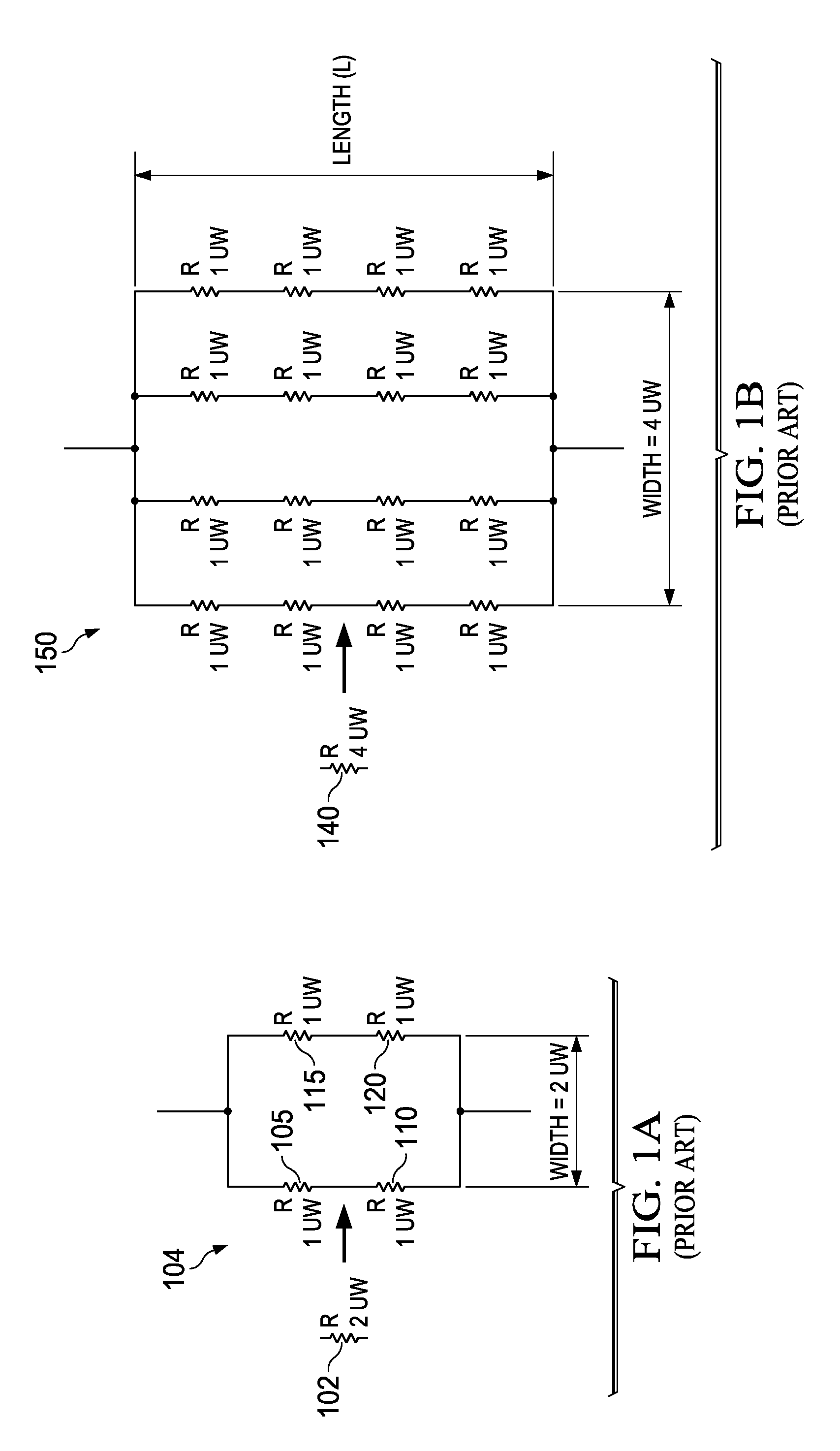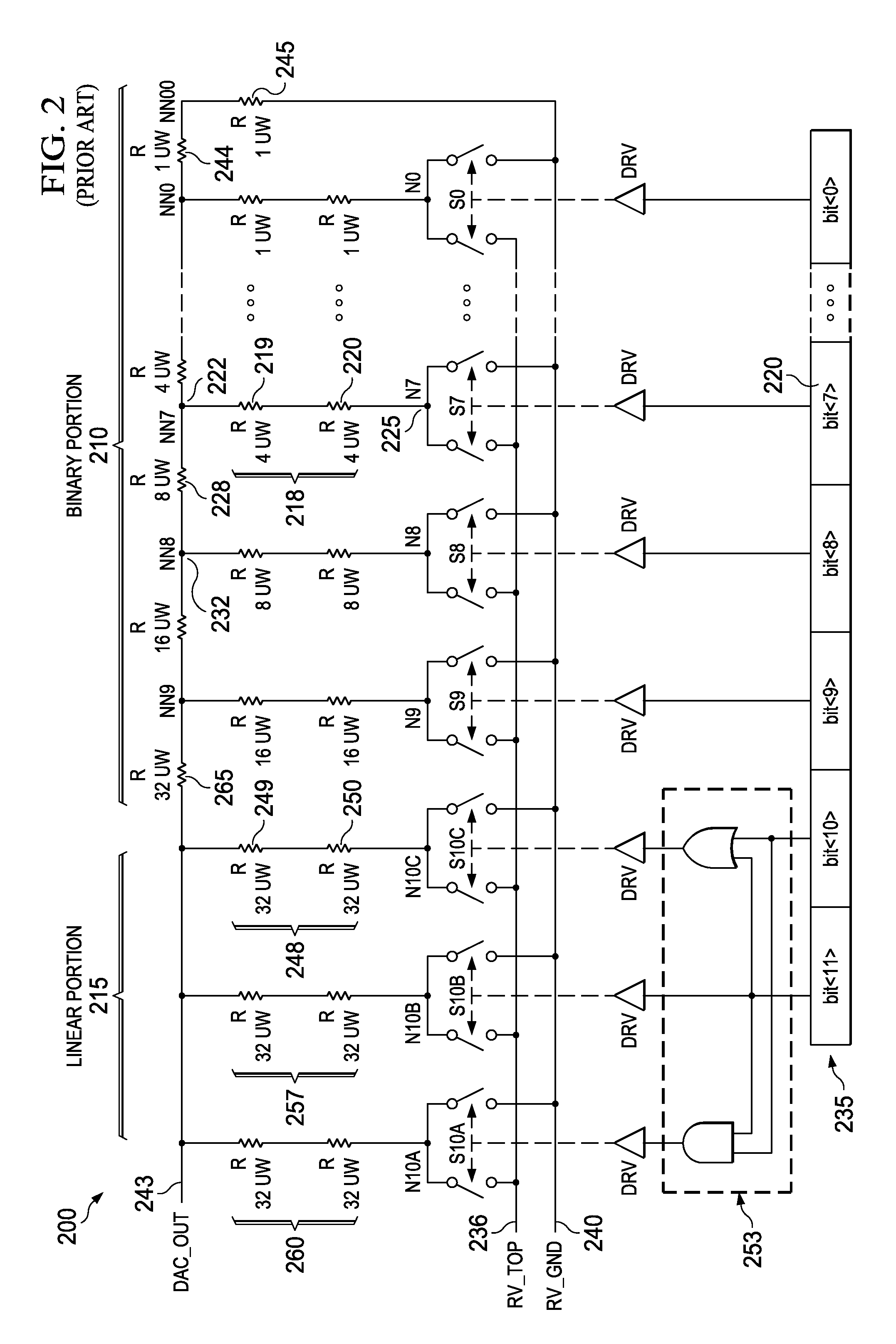Trim-matched segmented digital-to-analog converter apparatus, systems and methods
a digital-to-analog converter and segmented technology, applied in the field of digital-to-analog (“ d/a”) conversion, can solve the problems of dnl and inl non-linearity, adversely affecting the function being performed by a robotic device, and affecting applications utilizing the da
- Summary
- Abstract
- Description
- Claims
- Application Information
AI Technical Summary
Benefits of technology
Problems solved by technology
Method used
Image
Examples
Embodiment Construction
[0040]FIG. 3A is a schematic diagram of an example linear branch 300A of a segmented resistor DAC implemented with an R-2R network 300B according to various example versions of the invention. The resistor 310A of the linear branch 300A is implemented in the R-2R equivalent network as the resistor 310B. Resistor 320A of the linear branch 300A is implemented as a binary width scaled R-2R structure 320B. Resistors 321B, 322B, 323B and 324B form an equivalent resistor of resistance R and width of 2 UW. The resulting equivalent resistor R of width 2 UW is connected in series with resistor 325B of width 2 UW and then in parallel with resistors 327B of width 2 UW and 328B of width 2 UW to form an equivalent resistor of resistance R and width of 4 UW. This process repeats until the structure 320B eventually folds into an equivalent resistor of resistance R and width of 32 UW equivalent to resistor 320A. Thus, when the linear branch 300A is replaced with the R-2R structure 300B, the resultin...
PUM
 Login to View More
Login to View More Abstract
Description
Claims
Application Information
 Login to View More
Login to View More - R&D
- Intellectual Property
- Life Sciences
- Materials
- Tech Scout
- Unparalleled Data Quality
- Higher Quality Content
- 60% Fewer Hallucinations
Browse by: Latest US Patents, China's latest patents, Technical Efficacy Thesaurus, Application Domain, Technology Topic, Popular Technical Reports.
© 2025 PatSnap. All rights reserved.Legal|Privacy policy|Modern Slavery Act Transparency Statement|Sitemap|About US| Contact US: help@patsnap.com



